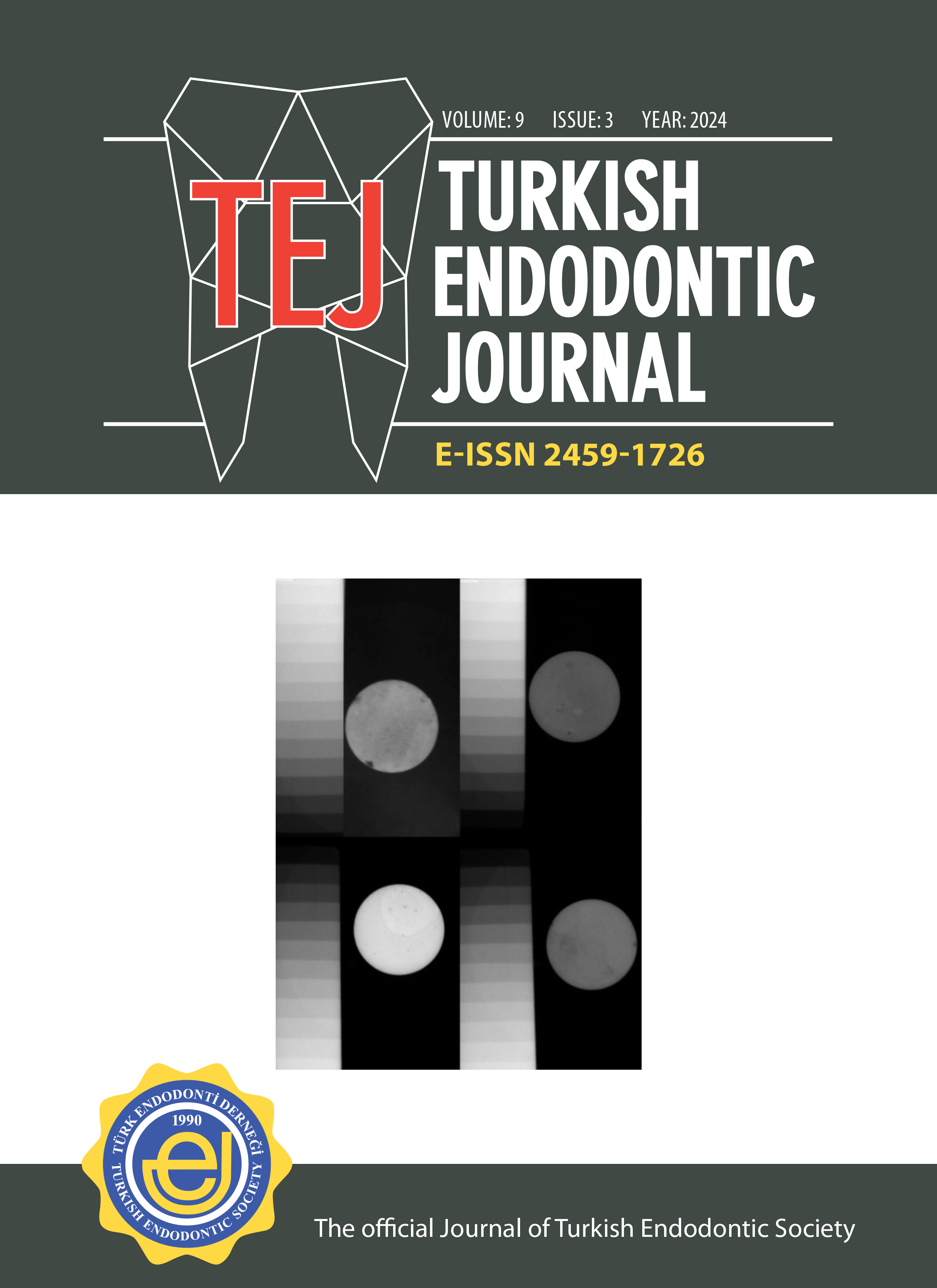A topographic analysis of the surface changes in reciprocating and rotary Ni-Ti instruments after multiple uses
Gülsen Kiraz, Arzu Kaya Mumcu, Safa KurnazDepartment of Endodontics, Faculty of Dentistry, Kutahya Health Sciences University, Kütahya, TürkiyePurpose: This study aims to investigate the impact of repeated use within curved root canals on the surface characteristics of both reciprocating and rotary instruments, using Field Emission Scanning Electron Microscopy (FESEM) for detailed analysis.
Methods: Curved acrylic blocks were randomly divided into two groups and were prepared using WaveOne Gold (WOG) and One Curve (OC) files. Both WOG and OC groups were further divided into subgroups: control, 1st use, 2nd use, 3rd use, and separated files. Following each use, the instruments underwent ultrasonic cleaning and sterilization procedures. These procedures continued until fracture occurred and changes in the surface characteristics of files were examined under FESEM. Descriptive data were reported for each group.
Results: With increasing use within each group, the instruments exhibited a rise in the frequency of surface damage, including cracks, flattening, deterioration of cutting edges, microcavities, and debris accumulation. A fracture occurred in the OC file after the 8th use, while the WOG file fractured after the 6th use.
Conclusion: Repeated use increased defects and deformations in both files. Based on the surface characteristics of both files, single-use applications of WOG and OC files are considered safer.
Manuscript Language: English

















